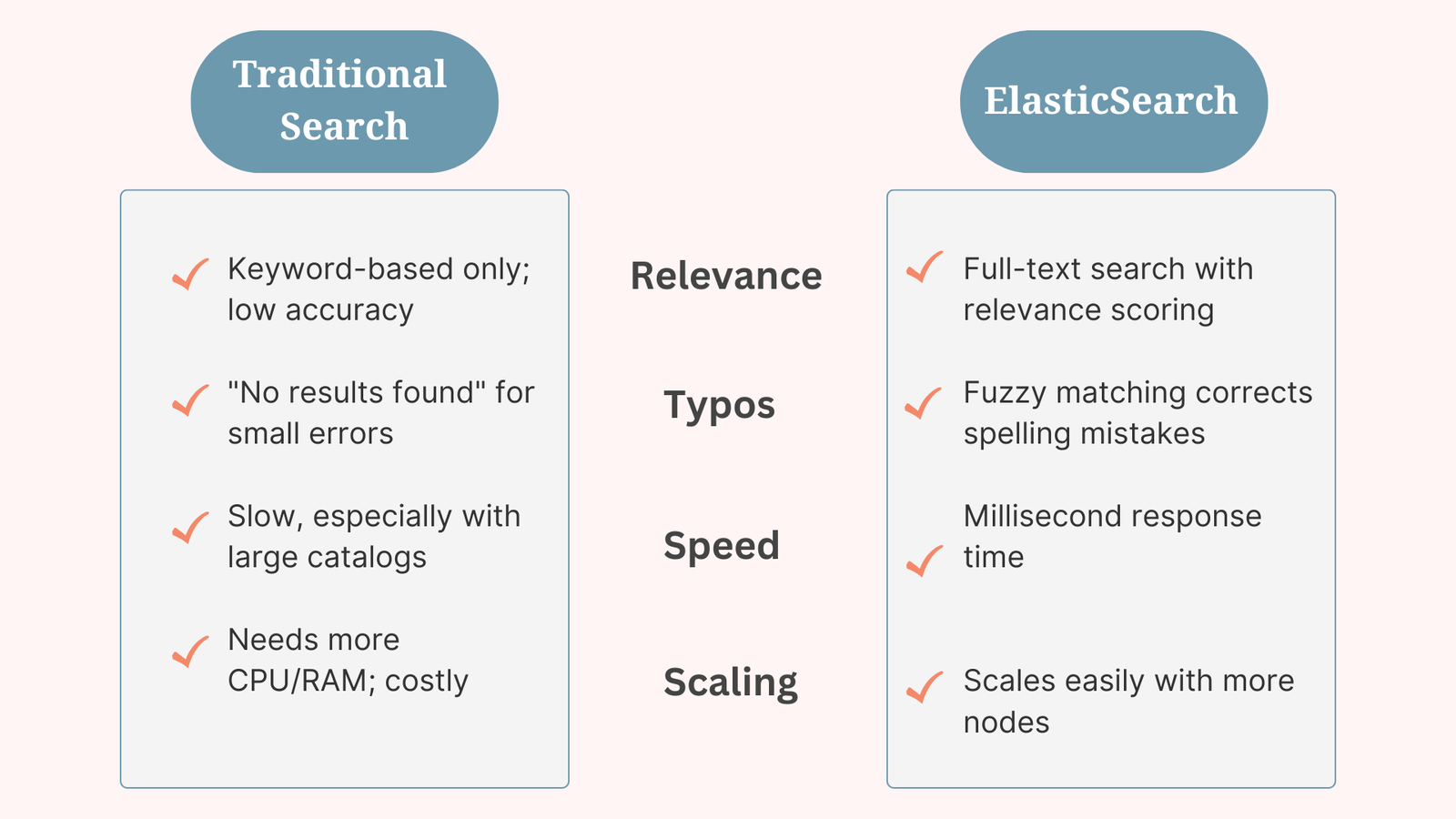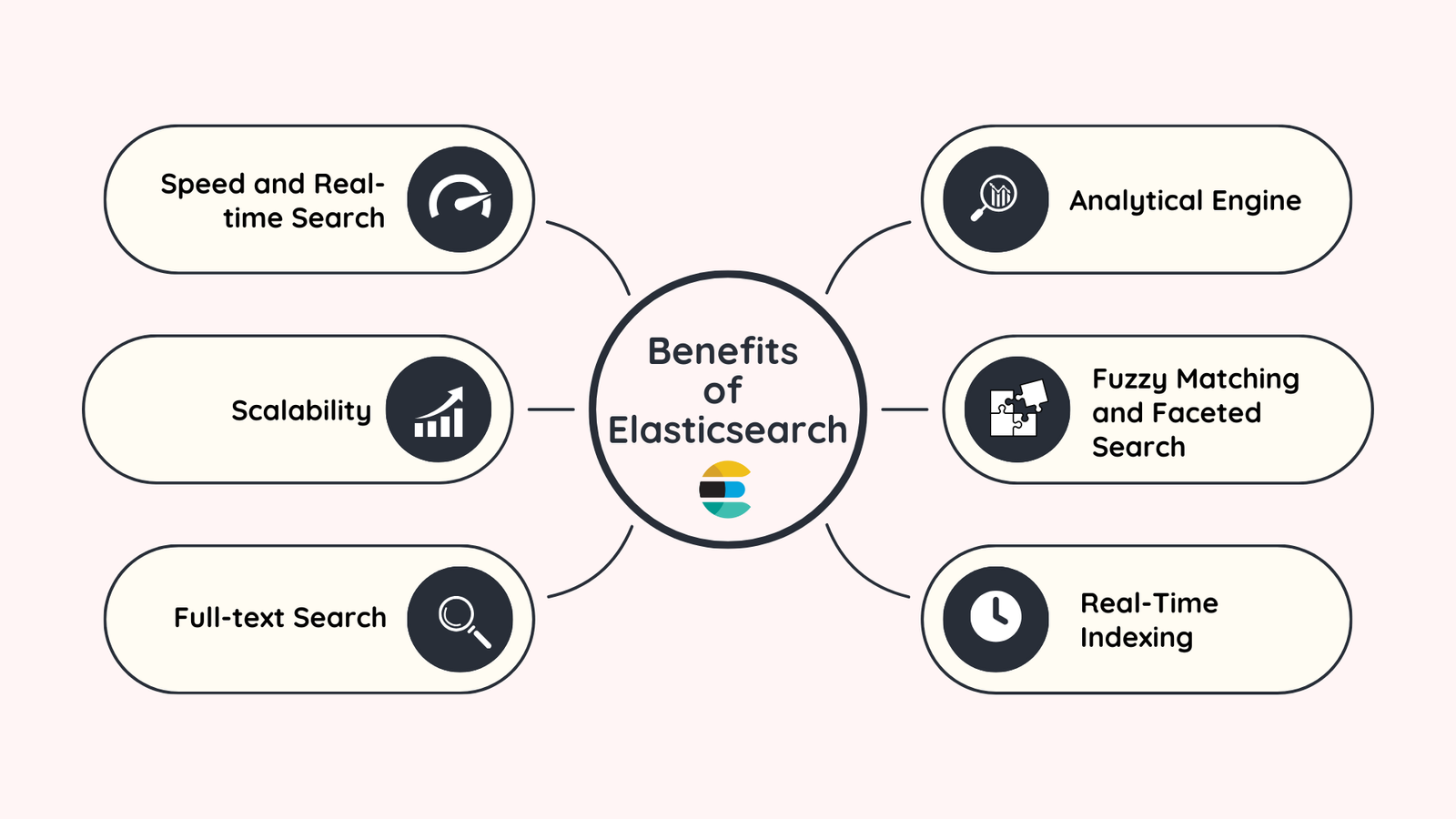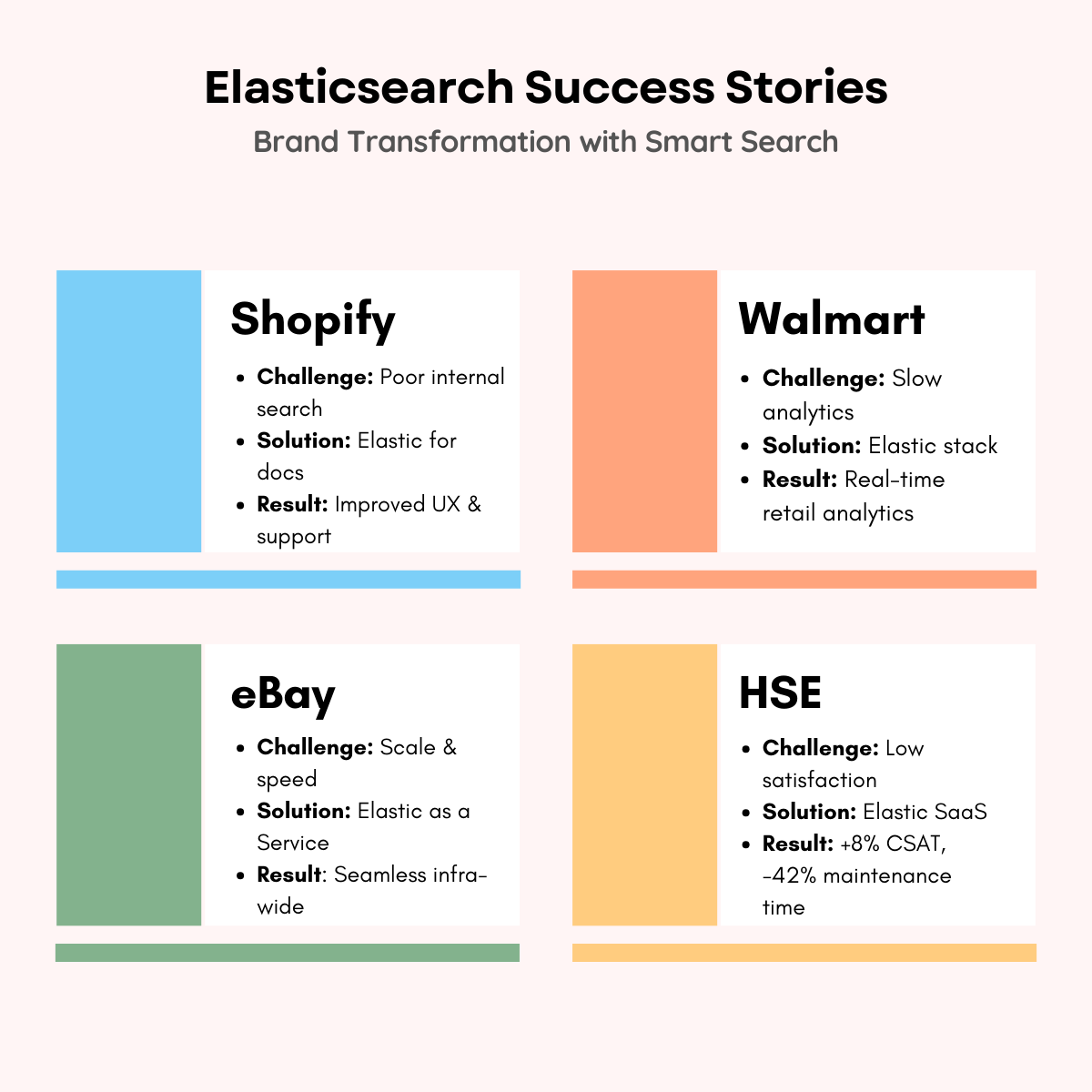Why Mid‑Sized Retailers Are Migrating from Lucidworks to OpenSearch


In e-commerce, every millisecond matters. When your e-commerce store hosts a catalog of over 10,000 products or more, delivering fast and best-relevant search results becomes a technical hurdle, which is not just about delivering the search results, but also about being strategic in delivering them very fast to the consumer.
But the question arises, how to achieve these results, when your business has a very large product catalog, and the traditional systems crumble under the weight of the scale? That’s where Elastic search comes in! It provides features like autocomplete, search suggestions, synonym matching, and much more at a very high speed and with accurate search results.
According to reports, data shows that an e-commerce site having a site search feature enabled for the user to search for any products from their catalog can increase the conversion rates by up to 50%. Meanwhile, studies by Oracle show that 89% of consumers switch to a competitor after a poor customer experience (which includes search experience). These aren’t just metrics, they’re warnings.
Slow or irrelevant search isn’t just a technical problem for CTOs and engineering managers or leaders who have to deal with big catalogs; it’s a direct threat to revenue and brand trust.
In this article, we explore the benefits of managing a large catalog search of products using Elasticsearch, the challenges, like scalability, speed, search volume, and relevance. You’ll walk away with a clear framework, real brand examples, and technical insights to future-proof your e-commerce platform with intelligent search.

Traditional database search solutions lack modern relevance-ranking expertise. Clients get results that mechanically match search terms but miss user intent and relationships between products. Some of the problems they faced included searches returning nothing unless the exact keyword was used, no support for synonyms or small spelling mistakes, and a relevance system that didn’t improve or adjust over time.
As strategy widens through product variety, surging traffic, etc., the traditional system falls awkwardly. Scaling vertically by adding CPU and RAM becomes cost-heavy and delivers bad results. This forces teams into a cycle of workarounds and patches, accumulating technical debt that hinders innovation and increases long-term costs.
Synchronizing product changes, including new products, pricing updates, and stock detection, against an old database in real time is a hurdle. Lacking a distributed, mutable indexing architecture, ensuring consistency and performance during frequent updates becomes more complex for teams.
A large catalog of products provide fundamental architecture challenges for traditional relational databases like MySQL. As catalog size increases, queries utilizing SQL languages, without indexing, become progressively slower, leading to a series of performance problems that impact every consumer encounter. Examples could include:

In e-commerce, speed is king. One of Elasticsearch’s biggest strengths is speed. It can return results in milliseconds, even when searching through millions of products. It relies on an inverted index, allowing it to find results extremely quickly. One company saw a 76% improvement in response time after switching, directly boosting customer satisfaction.
Its distributed setup means you can simply add more nodes as your catalog or traffic grows. Whether you’re dealing with thousands or millions of large catalog searches, Elasticsearch handles it without slowing down. That kind of scalability is key for growing e-commerce businesses.
Elasticsearch isn’t just fast, it’s smart. It breaks down and analyzes full-text, so searches go beyond keywords and understand meaning. This leads to more relevant results and fewer “no results found” frustrations.
It also supports fuzzy matching (great for misspellings like ) and faceted search, letting users filter results easily. Brands like HSE saw an 8% jump in customer satisfaction after improving their search accuracy with Elasticsearch.
Beyond just returning results, Elasticsearch acts as a powerful strategic tool, helping you understand the real dynamics of your customer base. It can surface search patterns and trends that reveal exactly what your users want, even if they don’t buy it.
Elasticsearch solves this with its near real-time indexing, ensuring that any change, whether a price drop, a new product, or a stock update, is immediately reflected in search results. There’s no delay.
Lastly, it’s highly customizable. From caching to sharding, teams can tune Elasticsearch to get the best speed and efficiency, ensuring your platform stays fast, even under pressure.

Elasticsearch has very powerful working and uses a document-based structure (JSON-based document) to store the data, unlike a traditional database, where data is stored in a row-column-based structure. Here’s a breakdown of how its underlying technical architecture functions:
Transitioning to Elastic search requires a well-planned strategy. Simply installing the software isn’t enough; the implementation must align with your business goals.
– Always assess your current catalog size and estimate growth over the next 2 years
– Analyze peak traffic patterns and concurrent search loads to right-size your architecture from day one
– Avoid “big bang” transitions. Start by decoupling your search function and migrating it as a microservice
– Use dual-write patterns and rollback mechanisms to ensure data consistency during cutover
– Go beyond product names like index attributes, categories, ratings, inventory status, and custom metadata
– Update analyzers to your catalog’s language and content to boost relevance
– Start with a minimum 3-node cluster using SSDs and allocate at least 50% RAM to the Elastic search heap memory
– Use persistent connections, implement response caching, and handle search downtime gracefully
– Monitor real-time updates via change data capture and queue systems for async syncing
– Track response time, index throughput, and click-through rates
– Use Elastic search profiling tools such as A/B testing and query tuning for continuous improvement
Include Elastic search-certified teams for smooth, scalable implementation, either via staff augmentation and/or fixed-cost delivery.

What started as a stopgap solution quickly became a cornerstone of Shopify’s support experience. At first, the team introduced Elasticsearch simply as a quick fix to improve their documentation search and solve an immediate issue. But once they saw how smoothly it worked and how easily it integrated, they doubled down.
HSE or Home Shopping Europe used the Elasticsearch service to improve their user base and shopping experience. The move led to an impressive 8% increase in customer satisfaction and a 4% rise in click-through rates. Furthermore, by transitioning to a SaaS solution, HSE was able to reduce software maintenance time by a remarkable 42%.
Walmart didn’t just use Elasticsearch! They reimagined how retail analytics should work. By building a self-service analytics platform on the Elastic Stack, they empowered teams across the business to move past legacy reports and start working with near-real-time insights. The result? Faster decisions, smarter inventory, and happier customers.
For eBay, search is mission-critical. So instead of handling it piecemeal, they built their own internal “Elasticsearch as a Service” platform. This customized approach of building their own service ensured speed, standardization, and scalability across eBay’s massive infrastructure.
Modalova, another clothing store, was facing a classic scale challenge, having over a million products and a search experience that just wasn’t cutting it. After integrating Elasticsearch, everything changed. Their search results became razor-sharp, leading to a huge jump in conversions, from 30% to 50%. They got a heavy revenue transformation.
Switching from traditional database search to Elastic search isn’t just about upgrading your tech stack — it’s about rethinking how your business competes. New e-commerce startups are coming and growing at a rapid speed, and customers expect instant, personalized results; therefore, traditional search systems just can’t keep up. It’s no surprise that Elastic search is gaining serious traction — its revenue increased by 18% year-over-year to hit 365 million USD. That kind of growth sends a clear message: businesses are betting big on smarter, faster search because it drives real results.
Companies continuing to rely on traditional database management systems for product catalog search face mounting competitive disadvantages. They are not designed for full-text search in a large volume of data in a database. Every month of delay means lost conversion opportunities, increased customer acquisition costs, and growing technical debt that becomes exponentially more expensive to address.
Ready to transform your e-commerce search experience for large products? RBM Software must be your next point, as we have a proven track record of guiding and working with leading brands. Our offshore team is qualified to integrate Elastic search and will deliver quality and affordability, with end-to-end implementation, QA, and support.
Schedule your free consultation today to get a detailed evaluation of your current site search catalog and learn how to unlock faster, scalable, and intelligent product discovery for your e-commerce business.